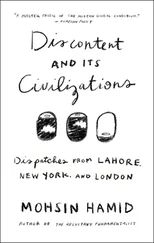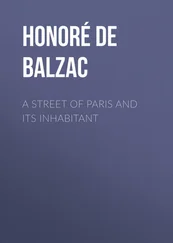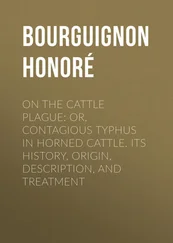Henry Edwards - Old and New Paris - Its History, Its People, and Its Places, v. 2
Здесь есть возможность читать онлайн «Henry Edwards - Old and New Paris - Its History, Its People, and Its Places, v. 2» — ознакомительный отрывок электронной книги совершенно бесплатно, а после прочтения отрывка купить полную версию. В некоторых случаях можно слушать аудио, скачать через торрент в формате fb2 и присутствует краткое содержание. Жанр: foreign_antique, foreign_prose, Путешествия и география, на английском языке. Описание произведения, (предисловие) а так же отзывы посетителей доступны на портале библиотеки ЛибКат.
- Название:Old and New Paris: Its History, Its People, and Its Places, v. 2
- Автор:
- Жанр:
- Год:неизвестен
- ISBN:нет данных
- Рейтинг книги:4 / 5. Голосов: 1
-
Избранное:Добавить в избранное
- Отзывы:
-
Ваша оценка:
- 80
- 1
- 2
- 3
- 4
- 5
Old and New Paris: Its History, Its People, and Its Places, v. 2: краткое содержание, описание и аннотация
Предлагаем к чтению аннотацию, описание, краткое содержание или предисловие (зависит от того, что написал сам автор книги «Old and New Paris: Its History, Its People, and Its Places, v. 2»). Если вы не нашли необходимую информацию о книге — напишите в комментариях, мы постараемся отыскать её.
Old and New Paris: Its History, Its People, and Its Places, v. 2 — читать онлайн ознакомительный отрывок
Ниже представлен текст книги, разбитый по страницам. Система сохранения места последней прочитанной страницы, позволяет с удобством читать онлайн бесплатно книгу «Old and New Paris: Its History, Its People, and Its Places, v. 2», без необходимости каждый раз заново искать на чём Вы остановились. Поставьте закладку, и сможете в любой момент перейти на страницу, на которой закончили чтение.
Интервал:
Закладка:
The last king of France and of Navarre died on the 6th of July, 1836, and it was not until nine days afterwards, on the 15th of July, that the fact was made known to the French public through the columns of the Gazette de France . The heart, too, of Charles X. was, according to royal custom, separated from the body; though instead of being preserved apart, as in the case of former French kings, it was, after being enclosed in a heart-shaped box of lead, again enclosed in a box of enamel fastened with screws to the top of the coffin. The Comte de Chambord, on the other hand, was buried in the ordinary manner, and not, like Charles X., with his heart on the coffin lid; nor like Louis XVIII., with his heart in one place and his body in another. The dead, according to the German ballad, “ride fast.” But the living move still faster; and in France, almost as much as in England, the separation of a heart from the body to be kept permanently as a relic is in the present day a process which seems to savour of ancient times; though, as a matter of fact, it was common enough, at least among the French, at the end of the last century. In our own country the discontinuance of what was at one time as much a custom in England as in France, or any other Continental land, is probably due to the influence of the Reformation, which, condemning absolutely the adoration of the relics of saints, did not favour the respectful preservation of relics of any kind. Great was the astonishment caused in England when, in the last generation, it was found that Daniel O’Connell had by will ordered his heart to be sent to Rome. The injunction was made at the time the subject of an epigram which was intended to be offensive, but which would probably have been regarded by O’Connell himself as the reverse, setting forth, as it did, that the heart which was to be forwarded to Rome had never, in fact, been anywhere else. The reasons for which, in the Middle Ages, hearts were enclosed in precious urns may have been very practical ones. Sometimes the owner of the heart had died far from home; and, in accordance with his last wishes, the organ associated with all his noblest emotions was sent across the seas to his living friends. Such may well have been the case when, after the death of St. Louis at Tunis, the heart of the pious king was transmitted to France, where it was preserved for centuries, perhaps even until our own time, in the Sainte-Chapelle. In the year 1798, while some masons were engaged in repairing the building, which had been converted into a depôt for state archives, they came across a heart-shaped casket in lead, containing what was described as “the remains of a human heart.” The custodians of the archives drew up a formal report on the discovery, and, enclosing it in the casket with the remains, replaced the whole beneath the flagstones under which they had been found. In 1843, when the chapel was restored, the leaden heart-shaped casket was found anew, and a commission was appointed to decide as to the genuineness of the remains believed to be those of St. Louis. An adverse decision was pronounced, the reasons for discrediting the legend on the subject being fully set forth by M. Letrenne, the secretary of the commission.
More authentic are the remains cherished at Rouen as representing the heart of Richard the Lion-hearted; though in this case again all similitude to a heart, whether in shape or in substance, has entirely disappeared. The descendants of St. Louis have in most cases had their hearts preserved, though for different reasons from those which seemed to have actuated the pious Crusader in his distant exile. Louis XIV., whose body, like that of his predecessors and successors even to the eighteenth of the same name, was to be buried at Saint-Denis, gave his heart to the Jesuits: “that heart,” says the Duc de Saint-Simon, “which loved none and which few loved.” The heart of Louis XVIII. was in like manner entrusted to the keeping of a religious house; and the same custom would doubtless have been followed when Louis XV. died of small-pox, had the dangerous condition of the body allowed of its being done.
From Louis XV. to Louis XVIII. no king of France died on the throne. But when the postmortem examination was made of the child who perished in the Temple, Dr. Pelletan, one of the surgeons who took part in the operation, placed aside the heart of the so-called Louis XVII., and, some twenty years afterwards, offered it to Louis XVIII., who, however, declined the gift. Whether the king disbelieved Dr. Pelletan’s story, or whether, as a certain set of writers maintain, he regarded as two different beings the child who died in the Temple and Louis XVII. (believed by many to have been smuggled out of prison and replaced by a substitute) has never been made known. The reputed heart of Louis XVII. did not in any case possess for Louis XVII.’s successor the value that Dr. Pelletan had hoped. Such relics cannot indeed be prized if any uncertainty exists as to their identity. About the same time that Dr. Pelletan, by his own account, was appropriating to himself the heart of Louis XVII., the heart of the great Buffon somehow became lost. Buffon had bequeathed his heart to a friend for whom he entertained the deepest affection. But the son, who had a great affection for his father, refused to part with it, and offered in its place his father’s brain. The heart was somehow lost in the midst of the revolutionary troubles, but the brain has been preserved even until now. The illustrious Cuvier wished at one time to purchase it, in order to place it at the foot of Buffon’s statue. At another time the Russian Government wished to buy it; and a high bid was once made for it by the proprietor of a museum of curiosities; until at last it became the property of the State.
The heart of Buffon may probably, like many others, have been stolen for the sake of its casket. Hearts intended to be preserved were usually enclosed in cases not of lead – as by exception the heart of St. Louis seems to have been – but of silver, and even gold. The precious metal was often, moreover, adorned with jewels of great value. Every precaution, in fact, was taken to render as difficult as possible the permanent preservation of the object which it was desired to keep for ever; and, as a natural result, the number of hearts which have come down to the present day is exceedingly small. Nearly all the hearts in cases now to be met with are those of modern celebrities. That of Voltaire – which after being reverently kept until his death by his friend and admirer, the Marquis de Villette, was at the Marquis’s death given by his heirs to the state – can be seen at the National Library of Paris. But the Hôtel des Invalides is, more than any other French establishment, rich in hearts of the great. There the hearts are religiously preserved of Turenne, of La Tour d’Auvergne, of Kléber, and of Napoleon. In England the encased heart best known to us is probably that “Heart of Bruce” celebrated in Aytoun’s “Lay” on the subject. Boece, in the story on which Aytoun’s poem is partly founded, relates that when Sir James Douglas was chosen as most worthy of all Scotland to pass with King Robert’s heart to the Holy Land, he put it in a case of gold, with aromatic and precious ointments, and took with him Sir William Sinclair and Sir Robert Logan, with many other noblemen, to the holy grave, “where he buried the said heart with the most reverence and solemnity that could be devised.” According to Froissart, however, and other authorities, Bruce’s heart was brought back to Scotland. Douglas, the keeper of the heart, encountering the infidels, endeavoured to cut his way through, and might have done so had he not turned to rescue a companion whom he saw in jeopardy. In attempting this he became inextricably mixed up with the enemy. Then taking from his neck the casket which contained the heart of Bruce, he cast it before him, and exclaimed with a loud voice, “Now pass onward as thou wert wont, and I will follow thee.” These were the last words and deeds of an heroic life. Douglas, quite overpowered, was slain; and it was not until the following day that the heart of Bruce and the body of Douglas were both recovered. Brought back to Scotland, the heart was deposited at Melrose, and the Douglas family have ever since carried on their armorial bearings a bloody heart. This is one of the few hearts which have been preserved to a good purpose, and its preservation in the present day is largely due to its having been embalmed in verse.
Читать дальшеИнтервал:
Закладка:
Похожие книги на «Old and New Paris: Its History, Its People, and Its Places, v. 2»
Представляем Вашему вниманию похожие книги на «Old and New Paris: Its History, Its People, and Its Places, v. 2» списком для выбора. Мы отобрали схожую по названию и смыслу литературу в надежде предоставить читателям больше вариантов отыскать новые, интересные, ещё непрочитанные произведения.
Обсуждение, отзывы о книге «Old and New Paris: Its History, Its People, and Its Places, v. 2» и просто собственные мнения читателей. Оставьте ваши комментарии, напишите, что Вы думаете о произведении, его смысле или главных героях. Укажите что конкретно понравилось, а что нет, и почему Вы так считаете.












